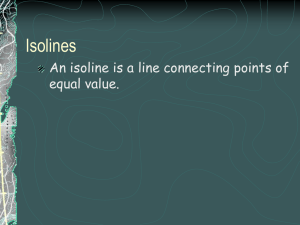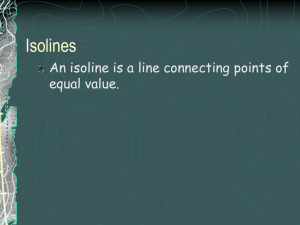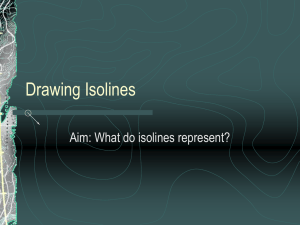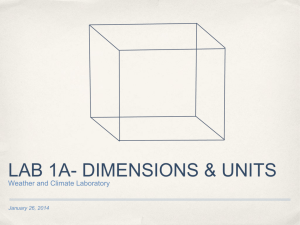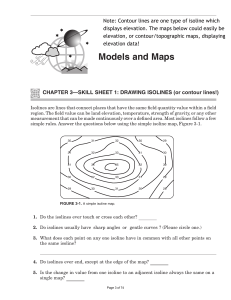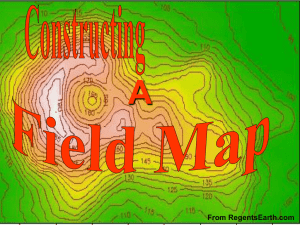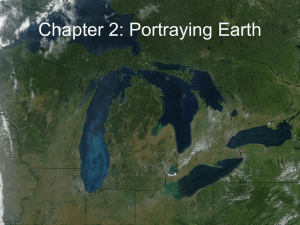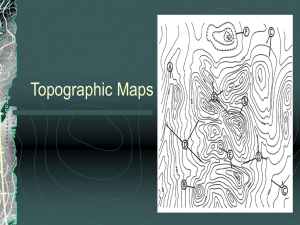Earth Science: Unit 1
advertisement
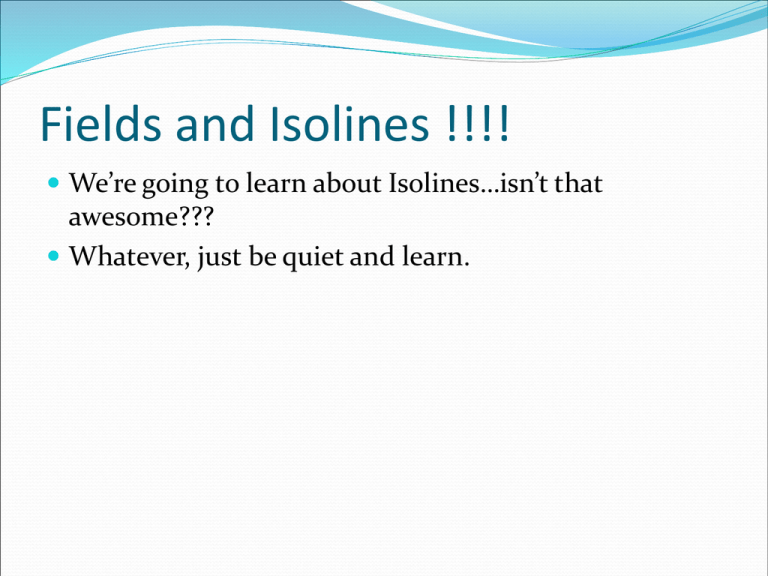
Fields and Isolines !!!! We’re going to learn about Isolines…isn’t that awesome??? Whatever, just be quiet and learn. Fields – WRITE THIS DOWN in your notes sheet!! Field – a region of space in which there is a MEASUREABLE quantity of a given property at every point Examples: Temperature, Pressure, Elevation, etc. The strength of a field varies (Ex. Whoever smelt it..) The farther away from the source, the weaker the field Fields can be MAPPED by placing measurements on paper and connecting locations with EQUAL readings with figures called ISOLINES!!! Isolines What the heck IS an isoline, anyway? An isoline is a line connecting points of equal value. Examples of isolines: Isotherms: points of equal temperature Isobar: points of equal barometric (air) pressure Contour: points of equal altitude Concentration of chemicals Anything else you can get a value for. (The weather channel loves isolines!) Rules for drawing them! How do you do it? Here’s how!! Once you learn this, you’ll be experts. 1. Isolines connect points of equal value. 5 5 10 10 10 10 15 15 2. Isolines are gentle, curving lines- no sharp corners. 5 5 10 10 10 10 15 15 3. Isolines should always form closed curves (loops) even though the map might only show part of it. So, at times you may have to extend a line to the edge of the map! 4. Isolines NEVER cross- this would mean that one point has two different values. Ex: one spot has two temperatures? That’s whack! 40 ° 50 ° 30 ° 60 ° X 20° Y Z 5. Isolines usually are parallel. (They have a parallel trend, and usually follow the same pattern.) More on Isolines!! 6) Isolines are drawn according to a designated isoline interval On a map, they are called the CONTOUR INTERVAL 7) Isolines should ALWAYS be drawn in pencil It’s easy to make mistakes, so you might have to do some heavy duty erasing. Stop whining. Visualizations of contour lines http://geology.asu.edu/~sreynolds/topo_gallery/topo_ gallery.htm What is Gradient? Gradient shows how quickly the value changes from one point to another. Use your ESRT to write the equation For Gradient on your notes sheet! Anything else you should know? Actually, yes. You see…sometimes isolines are REALLY close together Other times, they are kind of far apart Does this mean something? You bet! How can you tell whether a gradient is steep or gentle? A steep (high) gradient changes quickly and the isolines are close together. A gentle (low) gradient changes slowly and the lines are far apart. Steep area Gentle area OK Let’s practice. We are going to do some isoline practice now Take out that isoline packet I handed out at the beginning of the period. Hurry! Ok, here we go. Highlight data points. Fill in gaps in data. Connect the dots. Go on to the next value. Drawing Isolines II Drawing Isolines III

